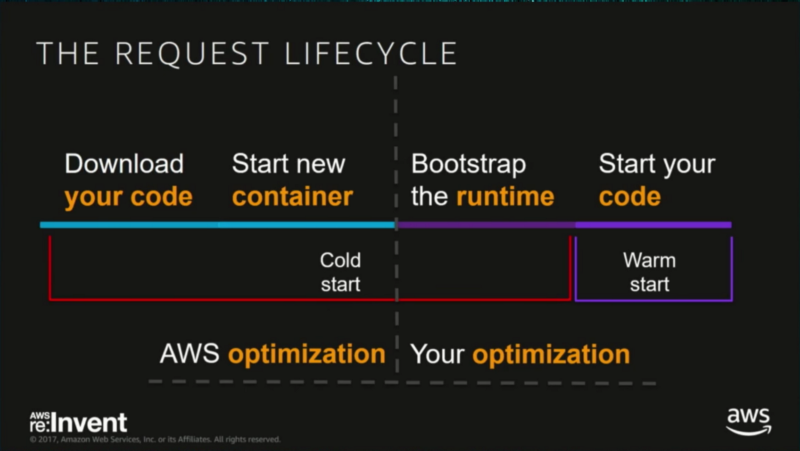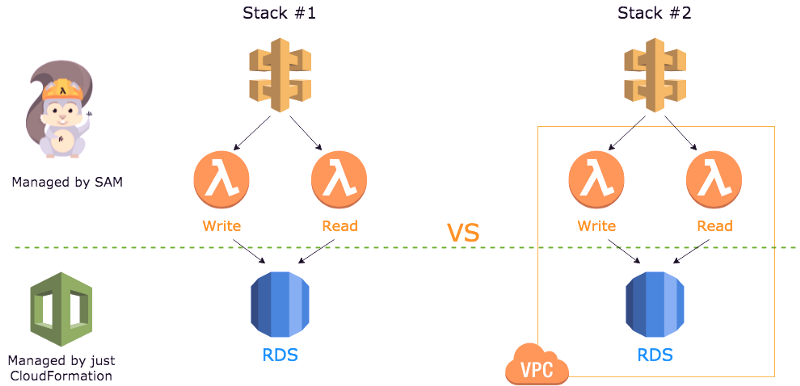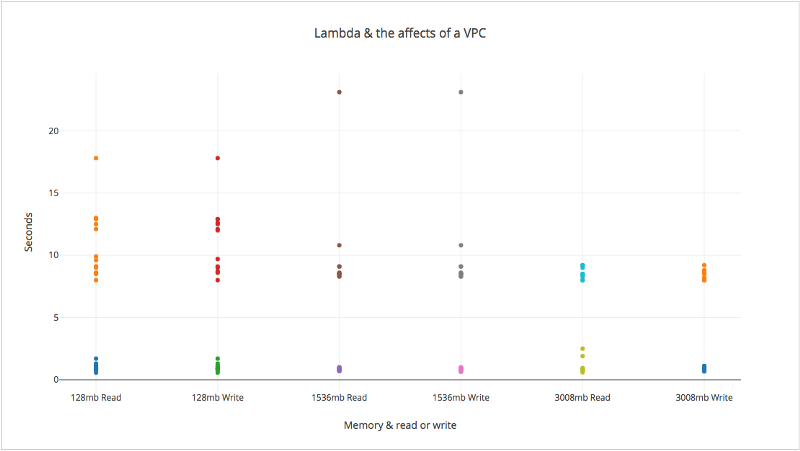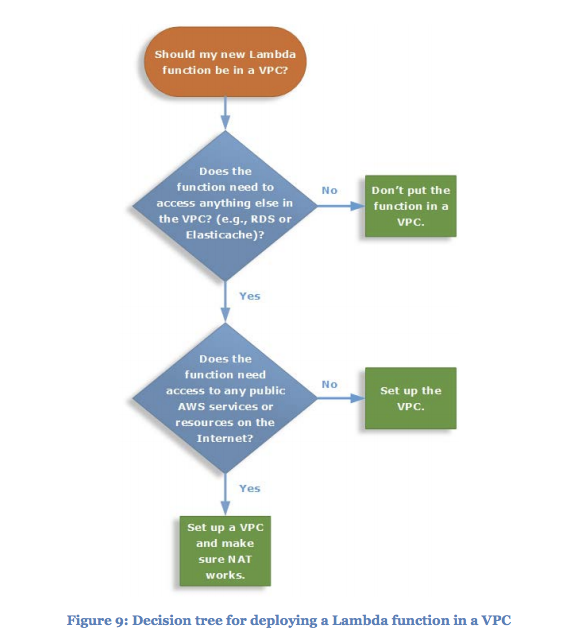by Nathan Malishev
How to manage Lambda VPC cold starts and deal with that killer latency

All serverless computing suffers from the dreaded “cold start”, and AWS Lambda is no different. I’ve explored cold starts before in a previous article. But what is not common knowledge is how using Lambda in conjunction with a Virtual Private Cloud affects latency. From various reports around the web, cold starts within VPCs could add up to 10 seconds of latency! ?
Background
AWS Lambda and serverless computing are shifting the paradigm of computing by having code executed on demand. And yes, that means you only pay for when your code is executing! ?
The serverless cold start is the first time your code is being executed by your cloud provider, and requires it to be downloaded, containerised, booted, and primed to be run. This can add significant overhead — up to 1.5s of latency!
But good news: these cold starts are expected to be outliers, only affecting 5% of executions. So, while they don’t happen all the time, they are important to think about when designing your application.

Virtual Private Cloud (VPC) is a private network in which you strictly control the inbound and outbound network traffic. They are widely used and, traditionally, you would run your databases and servers securely behind your VPC, only exposing a load balancer. If you have strict security requirements or services already behind a VPC to which you need access, you might have to deploy your Lambda functions in a VPC.
The added complexity of having a Lambda function live inside a VPC introduces new latencies. These latencies are due to creating an Elastic Network Interface and then waiting for Lambda to assign itself that IP. Also be careful, each Lambda function requires an IP address and you don’t want to run out!

This is extra networking overhead that you can’t do anything about, except to avoid the VPC in the first place. So, just how bad is it?
Setup
To test the affect of the VPC and cold starts, I created two nearly identical CloudFormation stacks.
CloudFormation is infrastructure as code, that is natively supported by AWS. You may have heard of similar products like Terraform or Ansible, which are great alternatives. The great advantage of CloudFormation is the tight integration with AWS and its intrinsic functions.
AWS Sam is an awesome extension of CloudFormation, which greatly reduces the complexity of deploying a Lambda function. It ties multiple cloud-formation resources together, so you don’t have to separately manage them to deploy a Lambda function. It also eases the deployment process, by zipping and deploying your code to S3 seamlessly. It also features built in canary deployments! But there are great alternatives like serverless, if being cloud agnostic is your thing.
This article isn’t about CloudFormation and Sam. but if you would like to see one, leave a comment :)

My two stacks are both CloudFormation stacks with the AWS Sam extension. They both feature a simple read and write function, written in Golang. These functions read and write to a single AWS Aurora RDS instance. The difference is that one stack is in a private subnet and requires the extra cold start overhead.
The VPC and RDS instances are managed by just CloudFormation, while the API Gateway and Lambda functions are managed by the Sam extension.

Below is a gist of Stack #1:
The other stack and the rest of the code can be found in my GitHub repo here.
Results
I ran these stacks, with an automated CloudWatch rule to trigger the Lambda functions every hour. I also deployed the stacks with varying degrees of RAM: 128mb, 1536mb, and 3008mb. In the graph below, all values above the 5 second mark are from Stack #2 (inside a VPC), and all values below are from Stack #1 (outside of a VPC).

It’s interesting to note that, over all the data points, adding a VPC increased cold start times by an average of 8.83s. Increasing the RAM did seem to reduce the cold start times added by the VPC.

It looks like the internet was right, and deploying your Lambda functions to a VPC adds huge overheads. An 8 second delay alone is a horrible user experience. If your application is properly decoupled, running into multiple cold starts would negatively affect a user’s experience.
When to VPC?
You should really only be putting your Lambda functions inside a VPC when you absolutely need access to resources that can’t be exposed to the outside world. Otherwise, you are going to be paying for it in start up times and it matters. As Yan Cui highlighted in his article ‘You’re thinking about cold starts wrong’, cold starts can happen at anytime, and especially during peak service usage.

Gotcha’s ?
If you do need to use a VPC, keep in mind that each time a Lambda function is executed, it uses a proportion of your ENI capacity from the subnet. From the AWS docs, they state you must have sufficient ENI capacity to support your Lambda scaling requirements. If you run out of ENI capacity this will cause your Lambda functions to fail!
To calculate your maximum concurrent Lambda executions in a given subnet we must use the following formula.
ENI Capacity = Projected peak concurrent executions * (Memory in GB / 3GB)
ENI Capacity = Number of IP addresses your subnet has
Memory in GB = RAM dedicated to your Lambda function
For example, the subnet 10.0.70.0/24, has 251 available subnets. If we have a Lambda function assigned with 1.5gb of RAM:
251 = Project peak concurrent executions * (1.5/3)
Projected peak concurrent (Lambda) executions = 502
As your concurrent Lambda executions is directly reliant on IP addresses available in the subnets, it’s best to use a subnet that gives you over 1000 IP addresses.
If you’re not sure, you can do the math and ensure your RAM allocation for all your Lambda functions in a given subnet is appropriate for your available IPs.
Thanks for reading! If you enjoyed it be sure to give it a clap.
References
The first slides displaying the cold start variants comes from AWS Reinvent’s 2017 talk “Become a Serverless Black Belt”.
Useful links
The AWS server-less application model on GitHub.
My Lambda VPC experiment on GitHub.